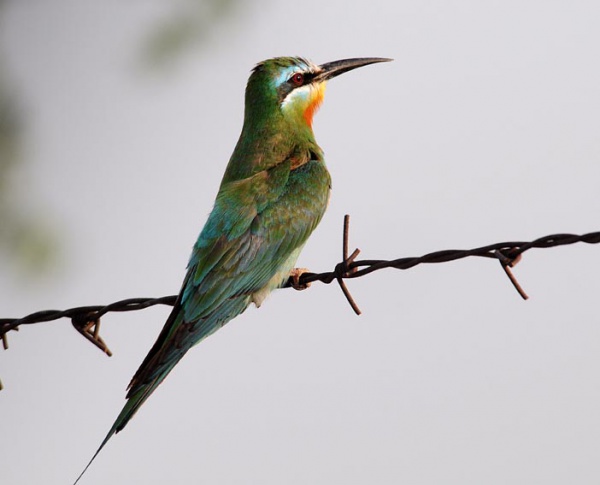Facts About Blue-cheeked bee-eater
The blue-cheeked bee-eater is a remarkable bird from the Meropidae family. Its genus name, Merops, translates to "bee-eater" in Ancient Greek, while its species name, persicus, means "Persian" in Latin. These birds breed in Northern Africa and the Middle East and migrate to tropical Africa for the winter. However, some populations remain in the Sahel year-round. Occasionally, these birds are sighted as rare visitors in Italy and Greece.
There are two recognized subspecies of the blue-cheeked bee-eater: Merops persicus persicus and Merops persicus chrysocercus. They are closely related to the blue-tailed bee-eater and the olive bee-eater, and some experts even consider them to be subspecies of the same species.
In terms of appearance, the blue-cheeked bee-eater is primarily green with distinctive blue patches on its face, a black stripe through its eye, and a yellow and brown throat. Their diet mainly consists of insects like bees, wasps, hornets, and dragonflies, which they catch during short flights from an open perch.
When it comes to nesting, blue-cheeked bee-eaters can be solitary or form small colonies, often alongside European bee-eaters. They typically build their nests in sandy banks or cliffs, especially around the Caspian Sea. Both males and females participate in caring for the eggs, with the female incubating them at night for about 23-26 days.
Their call is described as less melodious compared to the European bee-eater, but it is still a distinctive sound in their habitat.

 Zimbabwe
Zimbabwe